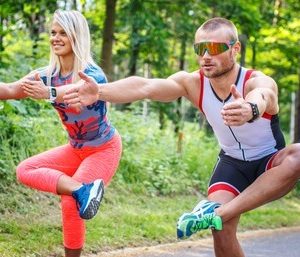Stability Ball Balance and Core Strength Exercises
What is the Benefit of a Stability Ball?
Stability balls have been used by both sports and conditioning professionals and physical therapists for a wide variety of physical fitness and rehabilitation tasks. The stability ball is an excellent tool for targeting both flexibility and balance. The stability balls versatility means it can be used to support the body for stretching or challenge the body with core exercises.
One of the main benefits of a stability ball is that it requires multiple muscle groups and so encourages the body to react as a whole, instead of using a single joint or muscle group. Stability balls challenge the body to maintain correct posture and balance during dynamic exercise movements. A stability ball creates an unstable surface which means it helps with neuromuscular coordination and more importantly it works the stabilizing muscles surrounding the body’s joints during exercise. Here are some great stability ball exercises for you to try:
Back Extension
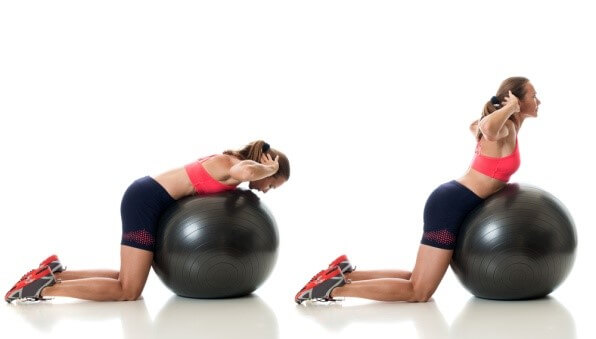
Start by kneeling in front of ball. Place your chest and stomach on ball. Your hands should be touching the back of your ears. Raise your chest off the ball until your back is in a neutral position, do not hyperextend your back or neck. Hold this position for 3 seconds then return to the starting position. Repeat 12 – 15 times.
Side Leg Lift
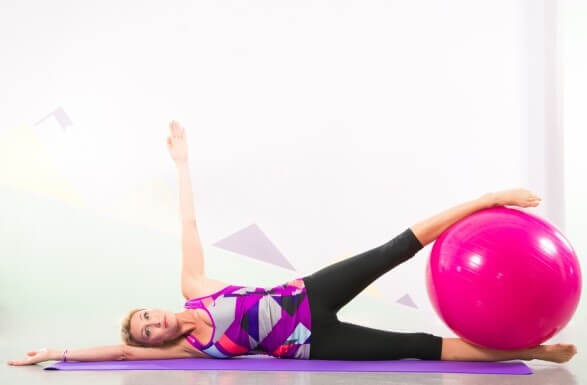
Lie down on your side and squeeze the ball between your ankles. Place one arm or a yoga block under your head for support. Slowly start to lift the ball off the floor, don’t let it tilt forward or backward. Hold the ball in the air for 5 seconds then lower it slowly to the floor. Repeat 12 – 15 times then change sides.
Elbow Plank
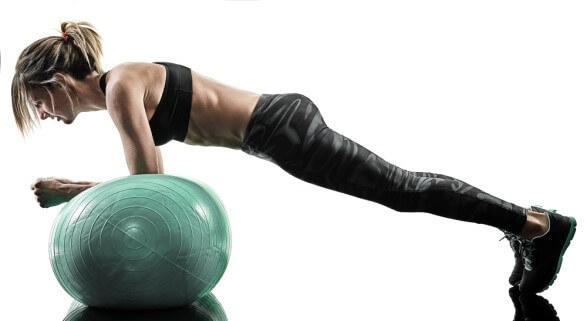
Start by kneeling on the floor with your elbows on the ball; make two fists with your hands. Slowly straighten your legs until your body is completely straight and your elbows are at 90°. Do not bend at the hips raising your buttocks above your body or let your lower hips drop below the body causing your lower back to “sag”. Hold this position for 30 – 60 seconds. Repeat 1 – 2 times.
Reverse Bridge
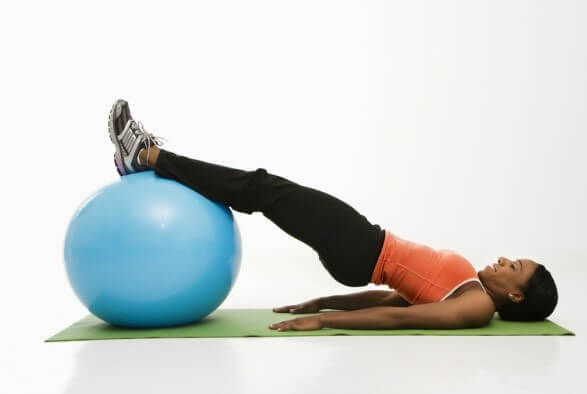
Lie on your back and place your calves and heels on the ball and slightly apart. Place your arms on the floor beside your body to create a solid base of support. Lift your buttocks off the floor keeping a slight bend in your knees. Hold this position for 5 seconds then slowly return to the start position. Repeat 12 – 15 times.
Jack-knife
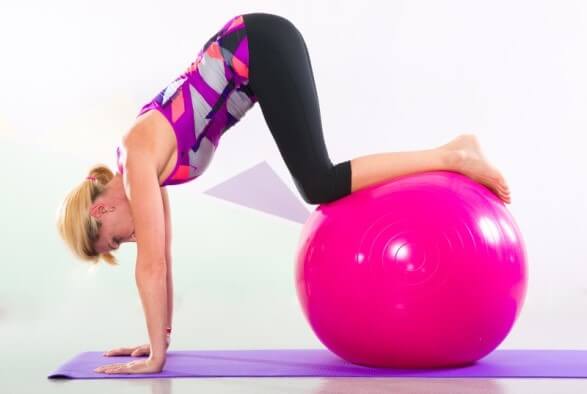
Kneel behind ball then place your chest on the ball, with your hands on the floor. Roll forward walking your arms out front until your knees are on the ball. Make sure your neck is in a neutral position and avoid looking up into hyperextension. Slowly start to pull your knees towards your chest until your shins are on the ball. Hold this position for 5 seconds then return to the starting position. Repeat 12 – 15 times.
Back Roll
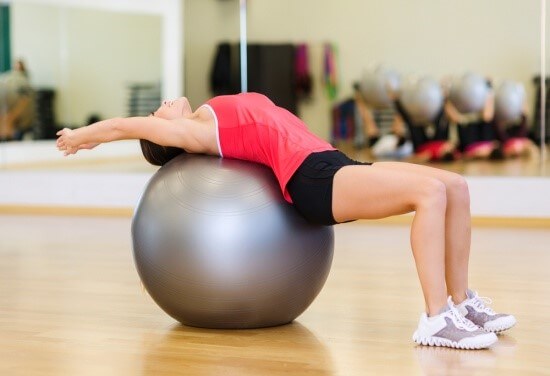
Sit on the ball and slowly walk your feet out until your back and head are supported on the ball. Your feet should be shoulder width apart to help with balance. Straighten your arms above your head allowing gravity to aide in the stretch. Hold this position for 30 – 60 seconds.
Chest Stretch

Sit on the ball, walk your feet forward and roll onto the ball until your head, shoulders and back are supported. Place your hands on the back of your head and drop your hips. Relax your hips and head as your elbows fall out to the sides. Relax your chest and inhale deeply for 5-seconds, then exhale for 5-seconds. Hold the stretch for 30 – 60 seconds and repeat 2- 4 times.
Kneeling Lat Stretch
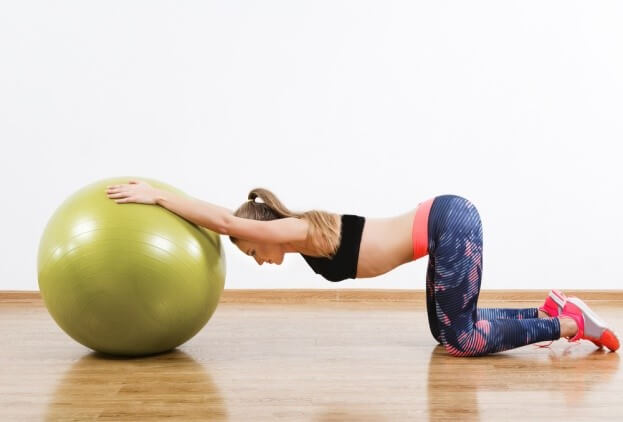
Kneel in front of the ball on a mat or towel. Place your hands on top of the ball about 12 inches apart with palms down. Roll the ball out in front of you until your legs are 90°. Allow your arms to straighten out completely, then gradually drop your shoulders down until a stretch is felt in your armpits and your sides. Hold this position for 30 – 60 seconds and repeat 2-4 times.
Before starting any exercise program or using equipment unfamiliar to you, the first thing to remember is safety first. When using a stability ball (also known as a Swiss ball or Body ball), it’s important to remember several essential safety rules such as performing the exercises slowly with control and proper form; workout in an open space away from any other pieces of equipment or furniture; use the correct size ball for your height and most importantly consult a physician if you have any health concerns or recent injuries.
Want to Learn More Ways to Incorporate Balance and Stability into a Workout?
If you are serious about a future, fueled by healthy eating, increased activity and infinite possibilities, then start with your very own Infofit life coach and personal trainer. Working with one of Infofit’s certified trainers will help you achieve your personal fitness goals in a responsible, safe and efficient manner.
We start by pairing you up with an industry leader who will assess your current fitness level and develop a custom workout routine that delivers a highly efficient and effective process of building muscle, burning fat while improving your balance and core stability.
Hiring a certified Personal Trainer through Infofit is one of the best investments you can make with regards to your overall health and fitness.
Happy Training!
Cathie Glennon – BCRPA-TFL


